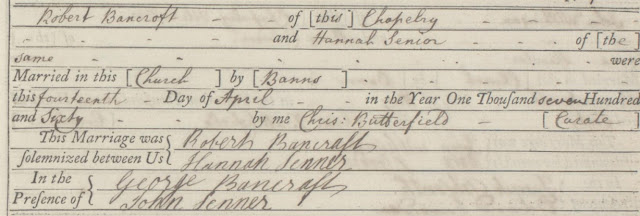 |
| Cutlers at work |
The Sheffield cutlery industry grew throughout the 17th
and early 18th century and by the 19th century the trade
was very large indeed, employing more than fifteen thousand people. In
comparison, London, at it’s height only employed less than one thousand people.
Here were many Bancrofts families living in and around the
Sheffield area in the 18th and 19th century who earned
their living in the cutlery trade, working in very grimy workshops, in particular a Robert Bancroft who lived in
the Stannington area of Sheffield.
The reasons for Sheffield area being the home of the home of
the British cutlery industry are many, and are mainly because of it’s good
natural resources. Five rivers flow from the surrounding hills into the area
and powered the water wheels which drove grinding wheels for the cutlers. Coal
was also readily available for smelting and forging and iron ore, for making the
blades, was mined locally as well. Finally, nearby quarries provided the
sandstone required for grindstones to sharpen and polish the cutlery. All these
factors and the large number of water powered workshops gave Sheffield all that
was required for a cutlery industry.
Another reason for the success of Sheffield’s cutlery
industry was due to the way it was organised under a system of Guilds by the
Lord of the Manor of Sheffield as the head. Unfortunately after his death in
1617, the guild system fell down, as nobody was able to take it over in a
position of authority.
The Sheffield cutlets were so concerned by this
disorganisation and the effect it was having on their livelihood, they
presented a bill to Parliament to form a new controlling body, and an act was passed
in 1624 forming ‘The Company of Cutlers of Hallamshire’ [which covered the
whole of the Sheffield area]. Under this new authority the cutlery industry flourished,
and although it lost it’s authority in the early 19th century, it is
still around today and holds some very important records.
 |
| Cutlers coat of arms |
The company’s freeman lists hold details of father and son
Robert Bancrofts:
Robert Bancroft, son
of Joseph Bancroft became a freeman of the Cutlers of Hallamshire in 1760, and
his son also called Robert became a freeman in 1797.
It is difficult to work out when Robert Bancroft [senior]
was born because a search does not bring up a record of his birth, but it is
clear that he was employed as a cutler, probably making pocket knives, in the
Stannington area of Sheffield for all of his life, and his is listed as
starting his apprenticeship in 1763 to an Ezra Couchin also from Stannington. There
are also records listing him in the late 18th century in this
occupation. One of these is his mark as a cutler:
Also around this time the local trade directory for
Sheffield and surrounding areas list him as involved with the manufacture of
knives.
In 1799, the local authority records show him renting two
separate pieces of property and land so we can assume he was probably employing
men to help him with producing cutlery most likely employing his son Robert
[jnr]
Robert married Hannah Senior on 14th April 1760,
and on 24th August 1766 their son, also called Robert was baptised
locally:
Robert [jnr] went on to work in the same trade as his
father, and as previously mentioned, was entered as a freeman on the Company of Cutlers in 1797.
It seems as though Robert [snr] died in Stannington and was
buried on 12th January 1810
Robert [jnr] is also listed in the Stannington records as
being buried on 15th August 1841
The occupation in the cutlery industry carried on throughout
the 19th century by descendants of these Bancroft individuals. Robert [jnr]'s son Henry born 1825, is listed on the 1851 census, still living in the Stannington area with his wife and young family as a 'pocket knife maker and on later census's is a 'spring knife maker'
Unfortunately for Henry's family, life seems to have become somewhat difficult because by 1901 his son, also called Henry, ended up in prison for none payment of ' civil debts'. Interestingly Henry[jnr]'s occupation is shown on the prison record as 'Cutler' still living in Stannington which means he was the 4th generation of Bancroft families earning a living from the cutler industry.
It is interesting to see that all these generations of Bancrofts owed their livelihood to one industry and all continued to live in the small area of Stannington, on the outskirts of Sheffield, probably working in poor grimy conditions in small workshops such as depicted by the following picture.
 |
| Henry Bancroft 1891 census |
Unfortunately for Henry's family, life seems to have become somewhat difficult because by 1901 his son, also called Henry, ended up in prison for none payment of ' civil debts'. Interestingly Henry[jnr]'s occupation is shown on the prison record as 'Cutler' still living in Stannington which means he was the 4th generation of Bancroft families earning a living from the cutler industry.
 |
| Henry Bancroft - Prison Record |
 |
| Cutler's workshop. |






No comments:
Post a Comment